POEMS IN POSTHUMAN AKKADIAN
Episode 17
Livestream from Todessa
Camera: Tman
Cast: Totleb & Co.
Editor: Todito
Soundmix: Todonsky Junior
Directed by: T.L.
POEMS IN POSTHUMAN AKKADIAN
written by General Totleben
© Ivan Stanev, executor testamentarius
Read the full text of the poem THE CUTTING AGE h e r e (p.150 – 170)
Topics
Anthropocene, Pazuzu, Proto-Elamite
Pazuzu
Hybrid Mesopotamian demon. According to literary sources P. represents a ferocious wind that brings destruction to cultivated land, cattle, and humans.
Representations of P., usually in the form of small heads, were extremely popular since his image was used to ward off other demonic beings. P. served particularly as the antagonist of the babysnatching demon Lamashtu, and was a favourite amulet of pregnant women and young mothers. P.’s popularity is also illustrated by the distribution of images outside Mesopotamia, which were found in Susiana, Luristan, Samos, and the Levant including Palestine/Israel.
The earliest known images from the 8th cent. display a fully developed iconography that does not undergo any significant changes through five cents. until the last attestations in Seleucid times. The identification of representations with P. is based on a number of objects bearing a standard incantation (Sumerian gá-e Pa-zu-zu or Akkadian anāku Pa-zu-zu “I am P.”) and is proven beyond doubt by an inscription on a clay P. head starting with annû qaqqad Pazuzu “this is the head of P.”
Images of P. show a rather distinct iconography with only very few deviations. His head consists of mixed anthropomorphic and theriomorphic elements. Most distinctive are the rectangular form of the head; the canine jaws with the teeth and tongue shown; and large, round, deep-set eyes under thick eyebrows. Animal horns, a horizontally cut human beard, human ears, round bulges on his head, and a throat marked by horizontal lines are further characteristic features of this demon. An elongated, small, canine body with the ribs clearly visible, human shoulders and arms ending in the claws of a predator, and human or animal thighs which turn into bird’s talons form the body. Two pairs of bird’s wings on his back, a penis erectus ending in a snake’s head, and the tail of a scorpion complete P.’s hybrid iconography.
Most statuettes depict P. en face in an attacking posture, with the right arm raised in smiting pose and the left leg put forward in an advancing stride.
Nils P. Heeßel
FGV
Ancient Romans marked runaway slaves with the letters FGV (for fugitivus)
Namlulu
namlulu [HUMANITY] (Old Babylonian), nam-lu2-lu7 “humanity”
Akk. awilūtu

Languages / scripts used: English, French, German, Russian, Ancient Greek, Latin, Italian, Polish, Spanish, Sumerian/Akkadian, Armenian, Proto-Elamite
Acknowledgements
Sixian Miao Choir, Didgeridoo Dreamtime, Vladimir Kasyanov, Dahl, freesound.org

